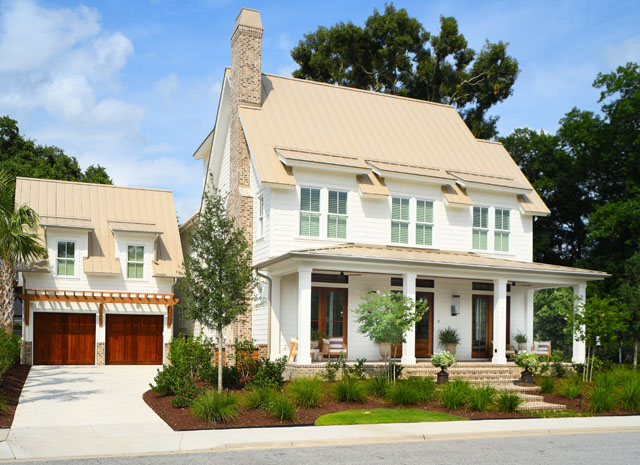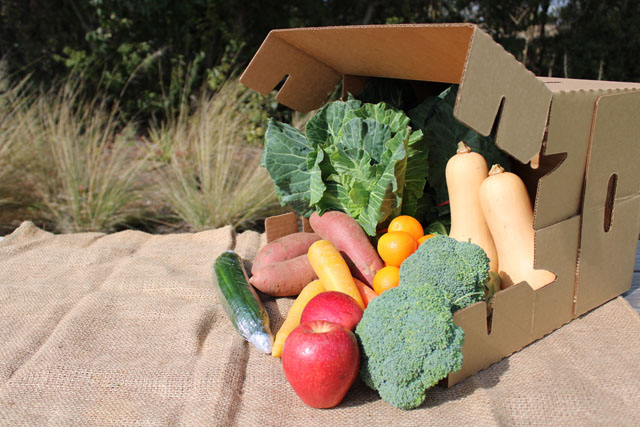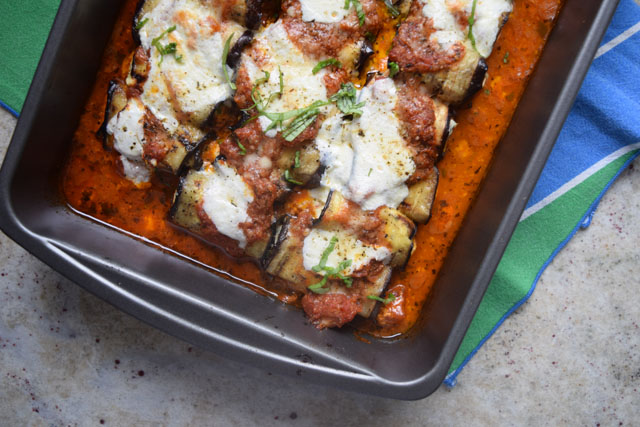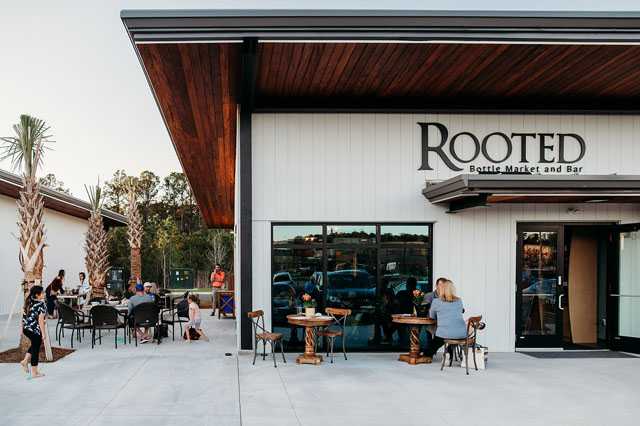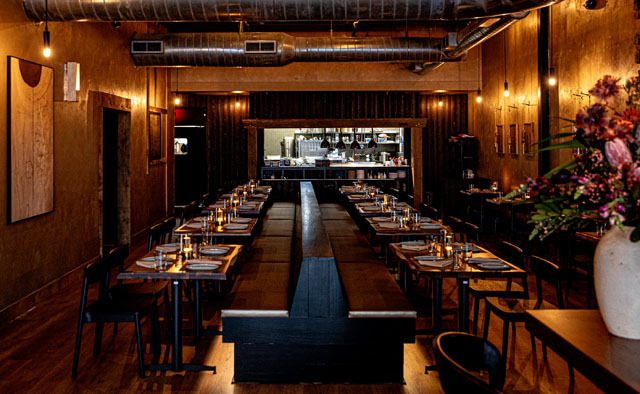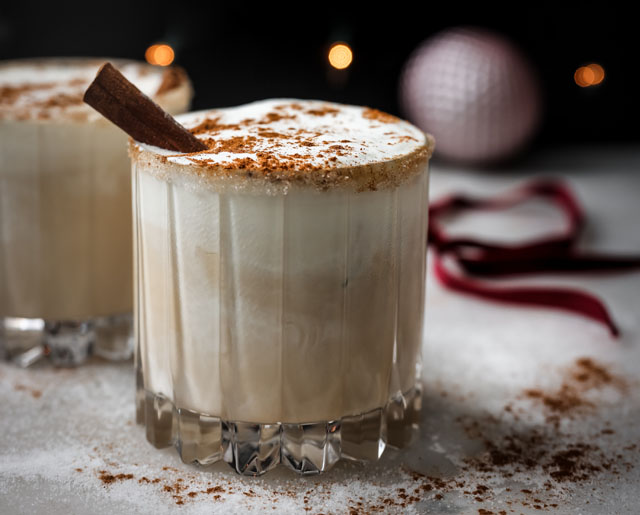Taste of Pakistan
03 Jul 2024
Ma'am Saab transports diners with intriguing flavors from the South Asian subcontinent
By Wendy Swat Snyder
Photos by Aleece Sophia

Charleston's standing in the United States as a top tier place to live attracts people from across the country and around the world. And that's having an impact on the city's already vibrant culinary scene as it evolves with the influx of folks with new and exciting foodways. When Ma'am Saab opened its doors a little over a year ago, it expanded the downtown food scene with a point of view that draws from South Asia's Mughal Empire era—with time-honored tastes and customs that celebrate the founders' Pakistani roots. And the city is the richer for it.
For husband/wife team Raheel Gauba and Maryam Ghaznavi, the decision to open a restaurant was driven by a yearning for the flavors of their homeland. He hails from Karachi and she, from Punjab—regions with both similarities and distinctions that Ghaznavi has combined in her cooking since they married in 2004.
“Ma'am Saab was Maryam's dream,” says Gauba, whose background is in branding, marketing and operations. He notes that the expression Ma'am Saab roughly translates to “boss lady,” an honorary title used to address women of stature in Pakistan. The couple thought it was a fitting name for a brand that strives to elevate women chefs.
“When we moved to Charleston, we found two Indian restaurants here, but nothing Pakistani,” said Ghaznavi. “We had to go to Atlanta to find a place where we could enjoy food from home. It was that craving that fed into this passion. As we got to know more people, I started to entertain and friends loved my food. I realized this was something I could definitely do.”
Both Ghaznavi and Gauba grew up in food-forward families among “amazing cooks” whose passion inspired them both. A self-taught home cook, Ghaznavi says “I learned from observation and tasting. I just live this cuisine.”
The cuisine is rooted in the era of the Mughal—a Muslim dynasty that ruled a territory that stretched from the outer fringes of the Indus River Basin in the west, northern Afghanistan in the northwest, and Kashmir in the north, to the highlands of present-day Assam and Bangladesh in the east and the uplands of the Deccan Plateau in South India.
“Those Muslim rulers lived large and lavish; a lot of rich, elevated recipes came out in that era,” notes Ghaznavi. “They were heavy meat eaters—true Hindus don't eat beef—they had huge feasts with biryanis, kebabs, extensive products. Pakistani cuisine really began to shine and expand.”
Their food melds their distinct region’s cuisine and heritage.
“We all enjoy each other's foods, but the foods have regional differences,” said Gauba. “If Indian and Middle Eastern food had a baby, that would be Pakistani food. And Maryam brings her own unique twist to elevate it.”
In 2019, their friend Michael Shemtov, owner of the former Butcher & Bee, encouraged them to do a pop-up at The Daily.
“I jumped on it, made a typical feast,” says Ghaznavi. “Michael connected me to a chef, and staff—he's one of those people in our community eager to connect people and resources. He's passionate and sincere about the process.”
A year later, the COVID pandemic shut down restaurants and many area businesses, forcing the couple to pivot.
“I said to Raheel, ‘we can start a home delivery service,’” says Ghaznavi . “I wanted to contribute in some way to help people. My concept was all home-cooked food, from my home to your home. We created a new menu every morning, one or two appetizers, a vegetarian and non-vegetarian option and some sides. It really worked for people—it was consistent, fresh-cooked food.”
“We were very sustainable and wasted no ingredients,” explains Gauba. “The service gave us a chance to test how Pakistani food was perceived. We got really great market feedback and saw what items were resonating.”
Indeed, when my guest and I visited their Meeting Street restaurant, everything about Ma'am Saab resonated, from the Van Gogh-inspired wallpaper printed with flowing cherry blossoms to the rustic original exposed brick walls. The design concept came from the imaginations of Ghaznavi and Gauba, who created elements like custom Gothic arches to support black draperies for the floor-to-ceiling windows.
“The design is like the forts and castles in Pakistan,” says Ghaznavi. “We restored the floor in the black-and-white checkered style common back home.”
Spots of purple neon lighting bathes the dining area, creating a sense of both romance and mystery.
Bartender Noah Kulisek guided us through the menu, suggesting a pair of sampling trays of dishes selected by the chef—one vegetarian and one with meats.
On the meat tray: Boldly-flavored buttered chicken—what Ghaznavi calls a gateway to Pakistani cuisine—was familiar and comforting. Melt-in-your-mouth chicken tenderloins floated in a lightened, tomato-y cream sauce spiced with cumin, garam masala and fenugreek. Ghaznavi says hers is completely different than that of other Pakistani and Indian versions and is a bestseller.
The Bihari ribeye was tenderized for two days in a marinade of yogurt, mustard oil, ginger, garlic and mango powder and then grilled. I scooped it up with naan and dipped it in one of our three chutneys, a method Ghaznavi says is done when bought from Pakistani street vendors. It, too, melted in the mouth and had deep, rich flavor.
On the meatless tray, we found tasty samosa chaat—the classic triangle of crusty puff pastry, here, stuffed with cumin and serrano chili-laden mashed potatoes.
Masala bhel, a puffed rice salad or chaat, had all the elements of a composed dish—savory, sweet, tart and crunch. Rice is gently roasted and tossed with paprika, tamarind, mint chutney, cilantro and fresh onions. The dish is finished with bits of mango, crisp wheat chips and a sprinkling of chickpea flour called sev. A light, refreshing start to a meal.
Ghaznavi put her own spin on a chickpea dish called Cholay, a popular Pakistani breakfast food. The beans were simmered until very tender, then half were mashed. Onions, serranos and ginger—trademark ingredients for gravies—enhanced the stock for the addicting dish.
Curried black eye peas were a blend of tomatoes, onion, garlic, cumin and serranos—what Ghaznavi called a poor man's food that's a rich vegetable dish.
With Ma'am Saab, Ghaznavi and Gauba bring a wealth of new flavors to the Holy City—from their house to ours.
Ma'am Saab
251 Meeting Street, Charleston
843-259-2660


